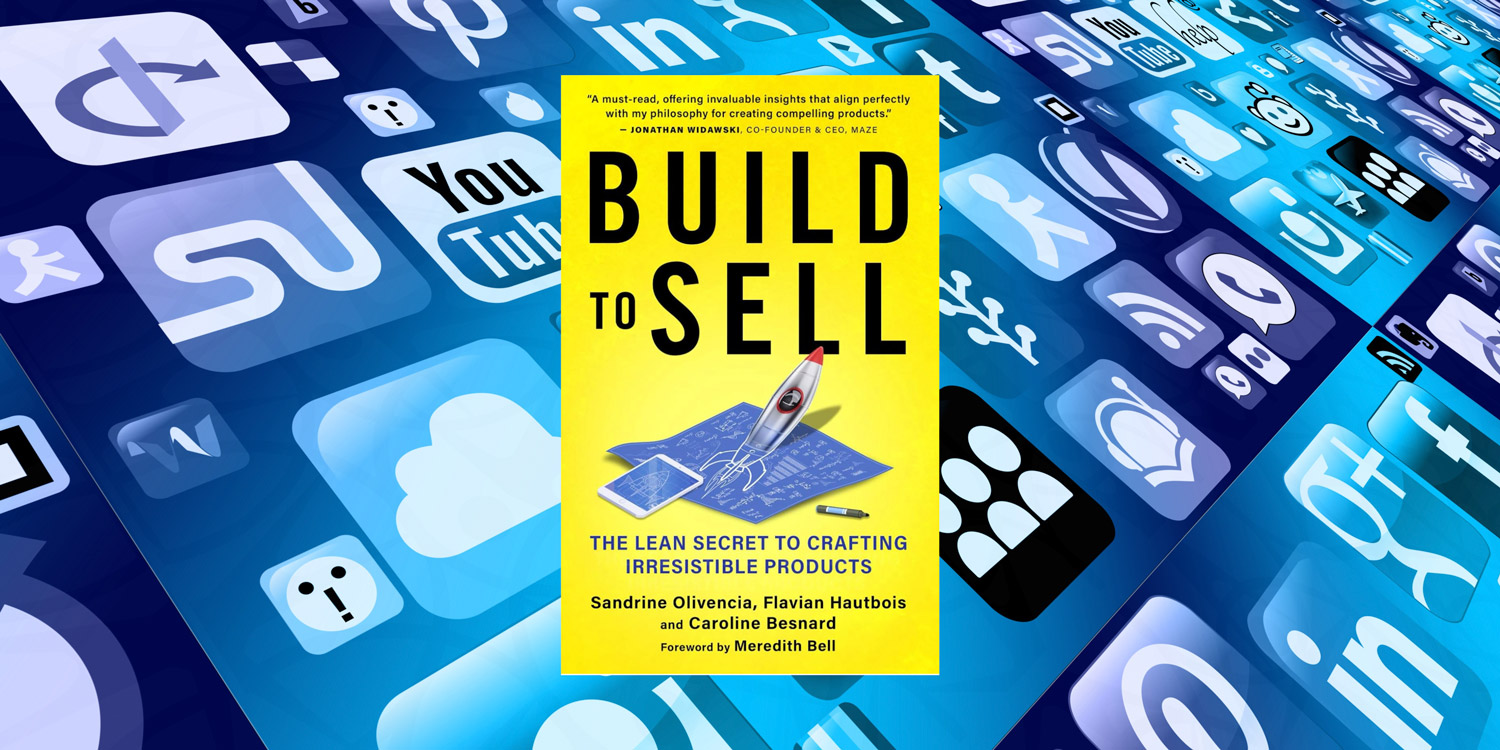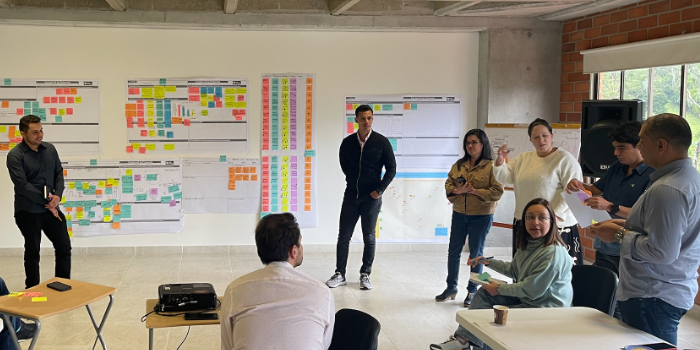
Simplicity sells
FEATURE - Presenting the key concepts in her latest book, the author tells us how to escape the feature frenzy trap and build products customers love.
Words: Sandrine Olivencia
Last week, I was sitting across from a startup founder, reviewing the latest version of their product—a sleek, modern app with lots of bells and whistles. As they proudly demonstrated the endless features they had packed into the product, I couldn’t help but feel a sense of déjà vu. I’d seen this before many times: a product bursting with features but lacking a clear, compelling purpose. It was a classic case of “feature frenzy”, where the focus shifts from solving real problems to simply adding more and more features in the hopes that something will stick.
This strategy is rooted in the belief that growing big and fast is the key to success. But this is a significant misconception. When we expand by adding more features, introducing more products and/or reaching more markets, we dilute the vision, drain resources, and scatter attention. We risk leaving our core investment products without any real traction. Every new project is expected to be the silver bullet, but the market value and potential keep falling short of investors’ expectations. Then the money starts to run out, and the company finds itself at a crossroads: to attract more funding it must streamline, refocus, and reassess investments and costs. This is draining—both in terms of resources and morale—and unfortunately, by this point, it is sometimes too late to realize the market potential of the founder’s initial idea.
This phenomenon is what inspired me to write Build to Sell: The Lean Secret to Crafting Irresistible Products. After 28 years in product development and business leadership, I've seen countless startups and companies fall into the trap of feature frenzy (and I must admit, I fell into that trap myself in the early days). They start with a great idea, but as they grow, they become obsessed with adding features and expanding too fast, often at the expense of the product’s simplicity and core value. The result? A bloated, unfocused product that confuses users and fails to deliver real value. However, building a successful product is not simply a construction exercise (“Let’s add these features.”), it is a problem-solving exercise (“What should we do to obtain this result?”).
LESS IS MORE
"Less is more." This expression rings especially true in product design and development. Simplicity has long been the cornerstone of successful strategies at companies like Apple and Google, where a focus on streamlined, user-friendly designs has driven their products to global success. Yet, many product teams and companies today fall victim to feature frenzy. This obsession with features is often fueled by the "fake it till you make it" culture driven by financial pressures and a Silicon Valley mindset that prioritizes rapid growth over meaningful innovation.
Consider Apple's early success with the iPhone. When it was first introduced, the iPhone was revolutionary not because it had more features than other phones on the market, but because it had fewer—and each one was carefully considered, polished, and integrated into a seamless user experience. Apple resisted the temptation to overload the iPhone with unnecessary features, instead perfecting a few key functions that would redefine the smartphone industry. This approach not only set Apple apart but also demonstrated the power of prioritizing quality and simplicity over quantity.
In contrast, many tech companies today chase “feature parity”, adding more and more features in an attempt to keep up with competitors or simply to impress investors. The craze of adding AI components or connectivity to physical objects is an example. This feature overload blurs the product’s unique selling proposition, confuses users, and ultimately slows down a company’s growth as it struggles to maintain and improve an increasingly complex offering. Our book, Build to Sell, tackles this issue by offering a lean approach to product development. We show how to craft irresistible products by emphasizing simplicity, prioritizing customer value, and building to cost. Feature frenzy often forces organizations to prematurely adopt a “big company” mentality: they become bogged down by overly complex products and processes, stifling agility and flexibility. In such companies, employees find themselves spending the majority of their time trying to fix existing issues rather than driving innovation. This reactive mode leads to a loss of focus on the market and its evolving needs. As a result, the company often ends up following an outdated roadmap, delivering products that no longer align with current market demands or customer expectations. Over time, this disconnect often causes the company to fall behind competitors who are more agile and attuned to the shifting landscape, ultimately putting its long-term success at risk.
ESCAPING THE TRAP OF FEATURE FRENZY
In Build to Sell, we argue that the key to building a successful, sustainable product is not the quantity of features but the quality of the overall user or consumer experience. To escape the trap of feature frenzy, companies must focus on four key concepts that we explore in depth: Emotion-Centric Design, the Chief Product Engineer, the Performance-Based Product, and Design to Cost.
THE THREE PILLARS OF LASTING SUCCESS
These four concepts—Emotion-Centric Design, the Chief Product Engineer, the Performance-Based Product, and Design to Cost—are essential for escaping feature frenzy and building products that not only resonate with customers but are also profitable. But they don’t stand alone. In Build to Sell, I integrate these concepts into a broader framework that combines three critical pillars of success: product management, process management, and leadership.
WHY LEAN THINKING MATTERS
Lean Thinking is more than just a framework; it is a mindset that can be developed by practicing the tools within the framework. It is about focusing on what truly adds value and relentlessly pursuing excellence. In Build to Sell, we integrate lean principles into every aspect of product development and strategy, showing how they can be used to create products that sell and drive company growth.
A BLUEPRINT FOR THE FUTURE
The essence of Build to Sell is about moving beyond the superficial metrics of success—like feature counts or funding rounds—and focusing on what really matters: building products that people love and that can sustain a business over the long haul. By integrating Emotion-Centric Design, the Chief Product Engineer role, Performance-Based Products, and Design to Cost into your product strategy, and by embracing Lean Thinking, you can avoid the pitfalls of feature frenzy and create something truly remarkable.
As I reflect on my journey, from building my very first digital product in the 1990s to writing this book, my hope is that Build to Sell serves as a guide for entrepreneurs, product managers, and leaders who want to build not just for today, but for the future. It is a call to rethink how we approach product development—shifting from a focus on quantity to quality, from quick wins to long-term value. And in doing so, I believe we can create products and companies that not only succeed but stand the test of time.
So, as you embark on your next product development journey, I invite you to consider this: are you cramming too many features into your product instead of working with your team to solve a real customer problem? Are you building something that will generate deep emotions with users or simply adding unnecessary complexity? Are you building a product that will last, or one that will quickly become obsolete? If you have any doubt about any of these points, it might be time to rethink your approach.



Read more


FICTION – The pandemic is throwing curveballs to us all, including a certain bearded gentleman who lives in the North Pole – until a magic “time-bending” solution is presented to him, that is.


FEATURE - Presenting the key concepts in her latest book, the author tells us how to escape the feature frenzy trap and build products customers love.


FEATURE - An initial look into the impact of lean management principles on the growth of young organizations hopes to encourage further analysis into why and how lean startups succeed.


CASE STUDY – Following a positive experience in manufacturing, this Colombian company brought lean to the rest of the organization. Its goal? To become a reliable partner for its clients in the national and international markets.

